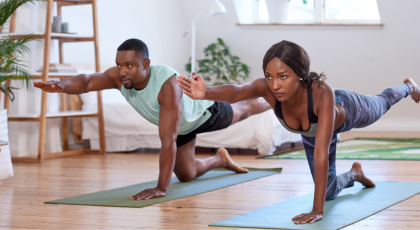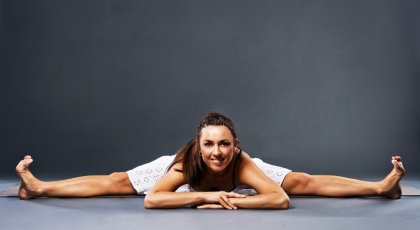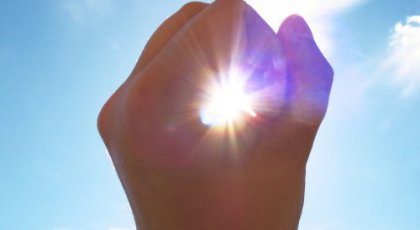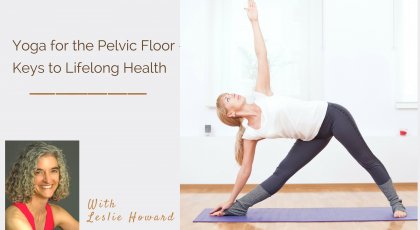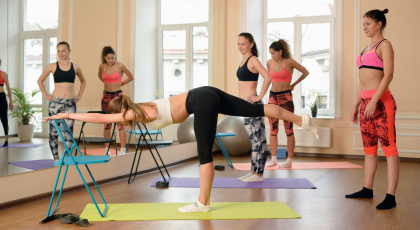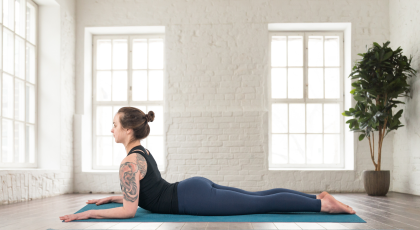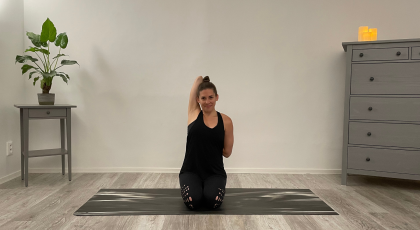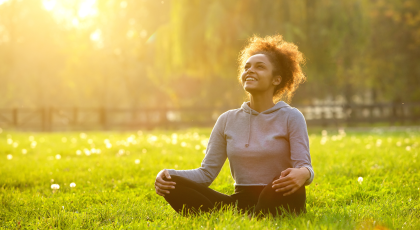View basket (0 items $0.00)
Error message
- Notice: unserialize(): Error at offset 5 of 154 bytes in variable_initialize() (line 1202 of /home/dh_6hcdc2/yogau.online/docroot/includes/bootstrap.inc).
- The file could not be created.
- The file could not be created.

Can We Control How We Age? Study Suggests Yoga Practice Can Help Alleviate “Dowager’s Hump”
Can we control how we age? Look in the mirror, and the answer seems to be “yes and no.”
We are bound to look older. There’s not a choice when it comes to wrinkles, saggy jaw lines and drooping eyelids, or the wind tunnel effect of skin pulled tight by surgery.
But with a nod to genetics and a deep bow to degenerative diseases that can strike apparently at random, we do have control over at least one sign of age that used to seem inevitable: the misnamed dowager’s hump, misnamed because it happens to men as often as women.
Also known as hyperkyphosis, the exaggerated curve of the thoracic spine throws the head forward, creating a strain on the front of the spine and tension in the muscles of the back, neck, and shoulders. It compromises our breathing and creates a cascade of physiological disaster that can even end in earlier death.
As we age, about 40 percent of us develop over-curved spines.
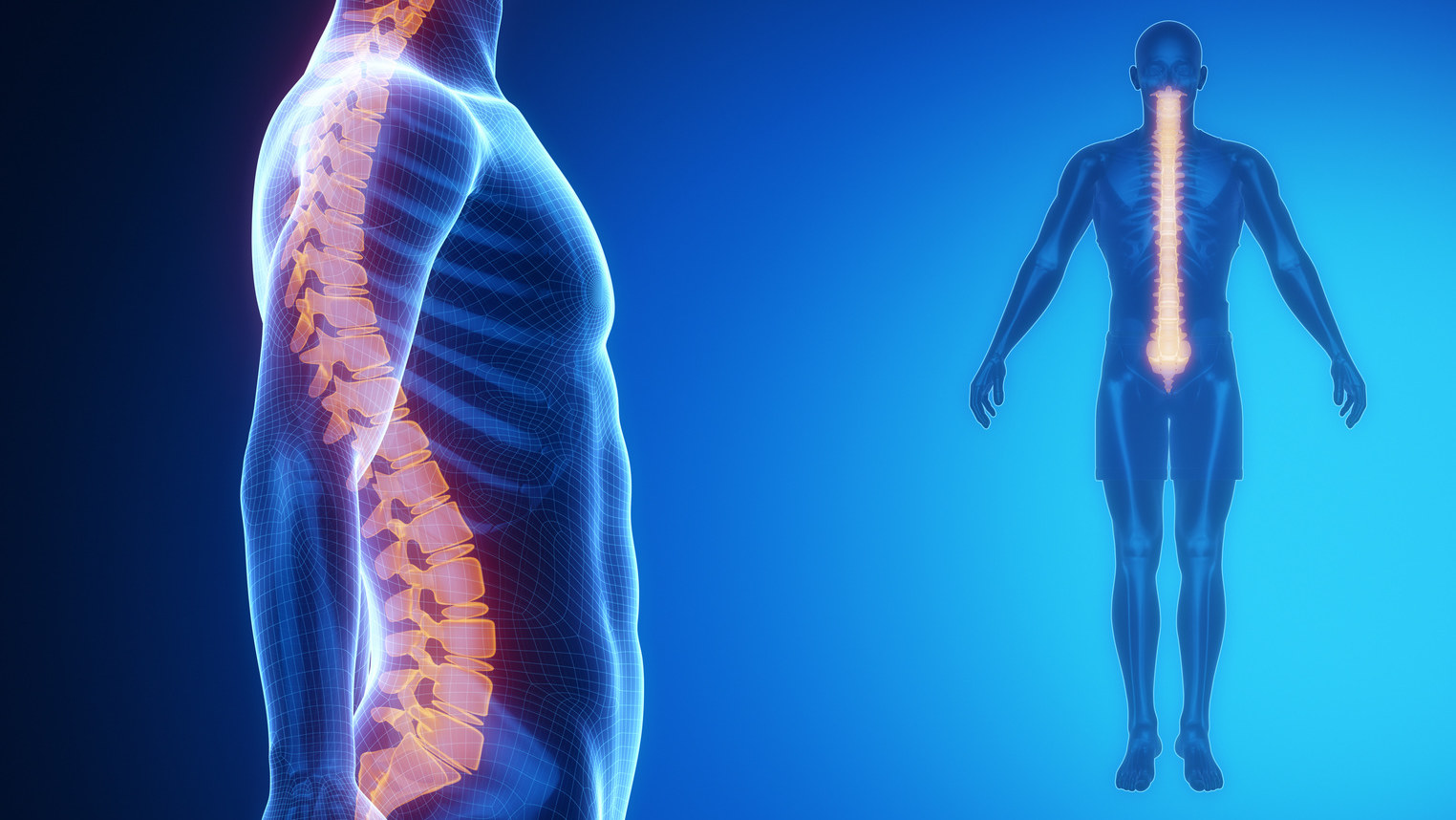
Yogis believe you are as old as your spine.
Study Suggests Yoga Can Help Hyperkyphosis
For years yoga teachers and students have believed that a yoga practice can help keep our spines straight, and can even improve on a spine that is already overly curved. 
There’s substantial scientific evidence that this is true, in the form of a randomized controlled trial conducted by researchers at UCLA. “Yoga Decreases Kyphosis in Senior Women and Men with Adult-Onset Hyperkyphosis: Results of a Randomized Controlled Trial,” was published in September 2009, in the Journal of the American Geriatric Society. The study was led by Gail A. Greendale, of the Division of Geriatrics, David Geffen School of Medicine at UCLA. (1) (The link below will take you to an abstract; you will need to use a library with a subscription to the magazine to gain access to the full article.)
Two groups of people who had developed hyperkyphotic backs as adults were randomly assigned either to a one-hour yoga class, three times a week, or to a monthly seminar, with lunch.
They all met specific criteria, including passing fitness tests such as standing with the feet together for 30 seconds. (If you feel wrong about your fitness level, there’s a baseline to both give you hope and get you out walking).
The median age of the group was 75. The age range was 60 to 90. They were predominantly women (81 percent), and mostly Caucasian (88 percent).
The yoga group progressed from yoga on their backs to yoga on all fours and in chairs and eventually, to standing poses. They worked on stretching out the muscles of the front chest (pectoralis major and minor), strengthening their abdominals and their erector spinae muscles, stretching their hamstrings and strengthening their quadriceps—pretty much your standard yoga class.
After six months, the yoga group had a decreased thoracic curve by the three measures used; in the control group, the thoracic curve had increased. The difference between the two: 5 percent. And this was in six months, in people with a median age of 75.
Standing Tall
We look at bones and see permanent structures. We forget that bones are held in place by muscles, fascia, tendons and ligaments, all of them pliable tissues, some more than others. And muscles, in particular, can be stronger or weaker.
In the conservative words of the study: “The decrease in flexicurve kyphosis angle in the yoga treatment group shows that hyperkyphosis is remediable, a critical first step in the pathway to treating or preventing this condition. Larger, more-definitive studies of yoga or other interventions for hyperkyphosis should be considered.”
I’ve been conducting my own somewhat random and uncontrolled study for 23 years now—ever since my first private class with Wende Davis, when she showed me a spinal stretch to help bring some length to my upper back.
I still have a tendency to round my back, especially in forward bends, but I can arch it too. And the freedom to move my spine more freely now than I did when I was 40 tells me that yes, part of how I grow older is under my control.
Read more on this topic from Eve Johnson and YogaUOnline - Rethinking Posture: How Spinefulness Helped Improve my Upper Back.
Study with Shawnee Thornton Hardy and YogaUOnline - Yoga for Kids with Special Needs: Focus on Autism and ADHD.
Reprinted with permission from Eve Johnson's myfive-minuteyogapractice.com

Eve Johnson is a certified Iyengar Yoga teacher with 18 years of teaching experience. Since 2016, she has been exploring Spinefulness, a postural system based on the work of Noelle Perez-Christiaens, one of BKS Iyengar’s first western students and the author of Sparks Of Divinity. Eve especially values Spinefulness for the presence and ease it brings to yoga postures and everyday life. She teaches at Yoga on 7th, in the South Main neighborhood of Vancouver, Canada.
Sources
Featured Courses
